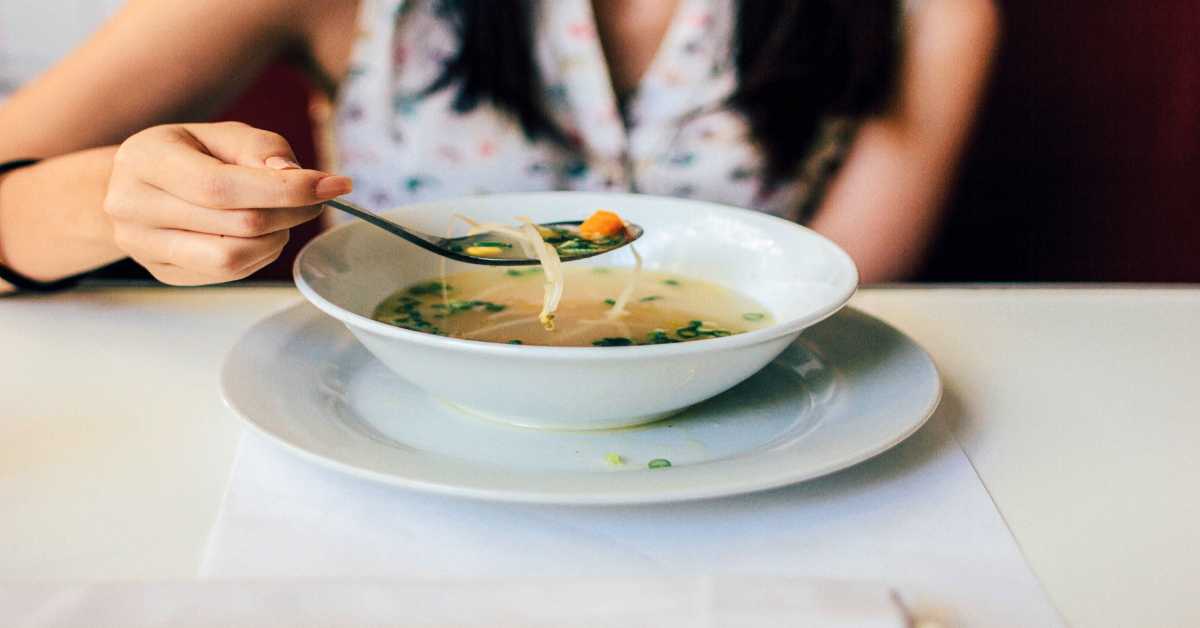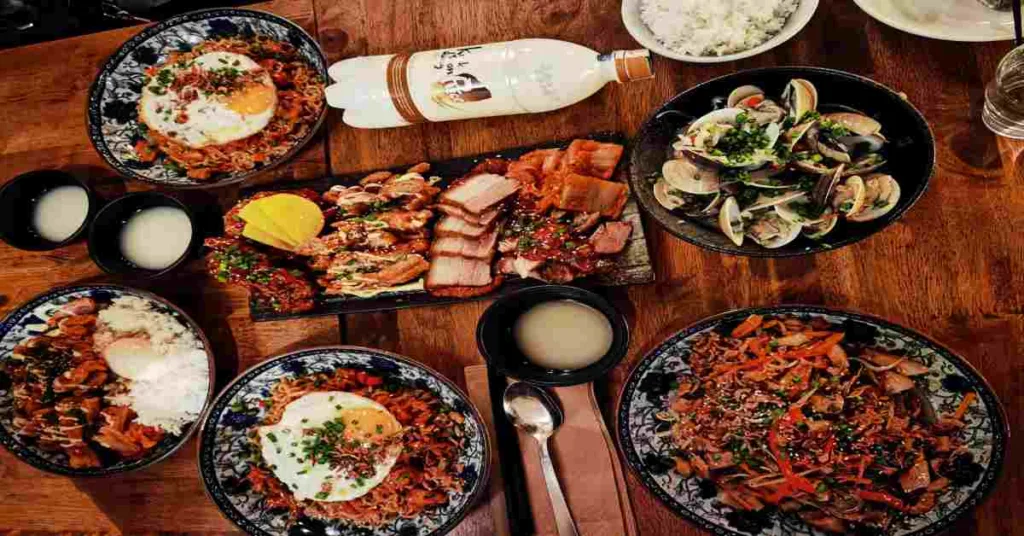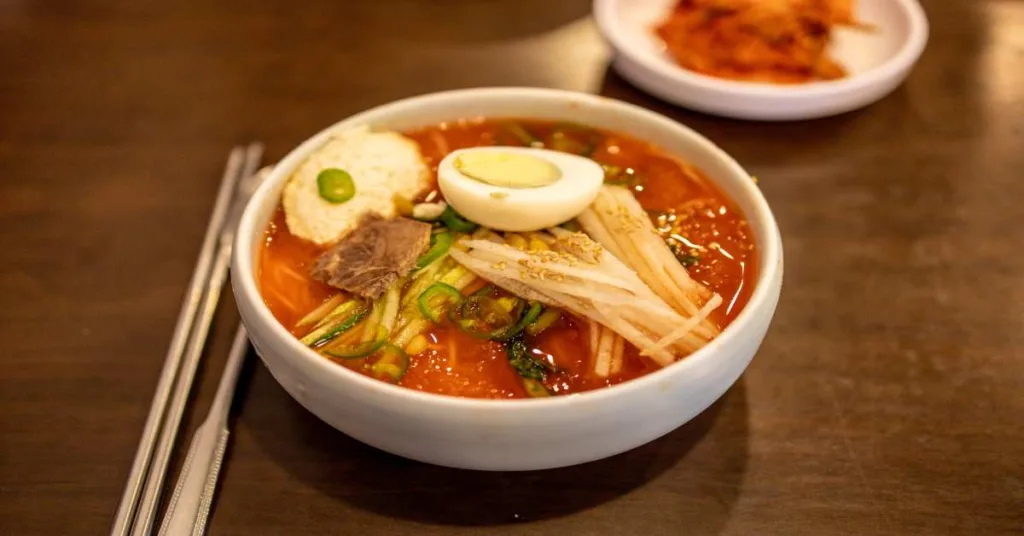Seolleongtang (Ox bone soup) Recipe
Seolleongtang, a native cuisine of Seoul, is a classic hot Korean soup prepared with ox bones, ox flesh, and briskets. It is frequently seasoned with salt, crushed black pepper, chopped green onions, or minced garlic depending on the consumer’s preference.
Contents:
- What is Seolleongtang?
- Is Ox bone soup healthy?
- Recipe
- How to serve & eat Ox bone soup?
- How to store & reheat Ox bone soup?
What is Seolleongtang?
Seolleongtang is a milky bone soup made from ox leg bones that have been simmered for several hours to produce a rich, creamy white broth. Families commonly consume this broth in Korea, particularly during the harsh winter months.
The Joseon Dynasty King Seonjong, according to legend, created this soup to feed a large crowd of people after an ancestral worship ritual involving a sacrificed cow.
Seolleongtang is a common Korean meal name and is similar to the “Kharode ka Soup” that Indians enjoy in the winter. These white soups include a lot of proteins. The inexpensive noodle soup is spiced with scallions, garlic, salt, and pepper. Nothing beats a bowl of this tasty soup on a chilly winter day.
It is a native cuisine of Seoul, a classic hot Korean soup prepared with ox bones, ox flesh, and briskets. It is frequently seasoned with salt, crushed black pepper, chopped green onions, or minced garlic depending on the consumer’s preference. The milky white, hazy soup is frequently consumed with rice.
In order to gradually extract the flavor from the bones, Seolleongtang is traditionally cooked over a low flame for a period of many hours to a whole day. The outcome, nevertheless, was well worth the work. The broth of Seollangtang sticks to the roof of your mouth and has a thick, meaty scent. Scrumptious!
The soup is wonderful and served with simply rice and kimchi, but it is also delicious when made with radish, sliced brisket meat, and noodles. The purpose of serving Seollangtang fairly blandly is to allow for individual additions of salt, pepper, and scallions. If you have an American or Western palate and have trouble tolerating spicy dishes, the bland flavor is probably a benefit for you.
Is Ox bone soup healthy?
Ox bone soup or broth is incredibly rich in vitamins, minerals, and antioxidants, especially calcium, magnesium, and phosphorus, which are obviously necessary for bone health. However, bone broth is also exceptionally healthful since it contains the amino acids proline and glycine.
Seolleongtang (Ox bone soup) Recipe
Ingredients: Ox bone( bone marrow, knuckles), beef brisket.
For serving: Cooked rice, noodles, scallions, salt & pepper.
Step 1: For about an hour, soak the bones in cold water to suck out as much blood as possible (or longer if you have time). Drain after a good rinse.
Step 2: For about an hour, soak the meat in another bowl to extract as much blood as you can. Drain. Up until use, keep it in the refrigerator.
Step 3: Place the bones in a sizable stockpot and fill it with cold water. Using a high heat setting, bring it to a boil. Boil for 5 minutes on medium heat after reducing it.
Step 4: Drain. Rinse the bones, then scrub any remaining brown particles from the pot. Place the bones back into the pot.
Step 5: Add cold water to the pot, allowing a small amount of space for boiling. High heat is used to bring it to a boil; next, medium heat is applied.
–
Step 6: Boil the broth covered for about five hours, until it thickens and turns milky (or longer if you have time). If required, reduce the heat a bit to keep the boil at a medium level. While the water is boiling, add a bit extra (hot, boiling water to maintain the cooking temperature) to cover the bones.
Step 7: Add the meat that has been soaked. Boil the beef for 1 to 2 hours, or until it is tender. Take the meat out.
Step 8: After cooling, slice the meat very thinly and add it to the soup for serving. Colander the broth and pour it into a big bowl or another pot to cool.
Step 9: Refill the pot with clean water. Bring to a boil while using high heat. Heat reduction to medium. Boil the broth while covering it until it gets thick and milky. To keep a moderate boil, slightly lower the heat. Colander-style, pour the milky broth into the pot or sizable basin where the first batch is being cooked. If you like, you can do this one more time. Just combine them once more to make them equal.
Step 10: To remove the fat, use a fat separator, or store it in the refrigerator.
Step 11: Pour the heated soup over the meat pieces in a serving bowl, top with some rice and, if preferred, noodles, and then serve. Scallions, salt, and pepper are typically presented separately so that each person can season to their own taste. Serve hot alongside kimchi.
TIPS:
- After creating the initial batch of soup, don’t discard the bones. Reuse them to create a fresh batch. The second time around, the broth will be milkier.
- Aromatic veggies like onion, garlic, and the white sections of huge scallions are frequently used. However, utilizing solely the bones will result in a more potent beef flavor. Personal preference is at issue. Try both options, then choose the one you like.
How to serve & eat Ox bone soup?
The Ox bone soup serves with warm rice, kimchi, minced garlic, chopped green onions, kosher salt, and freshly ground black pepper. To the broth, add some salt, finely minced green onion, and black pepper. Use a spoon to thoroughly combine it. Warm rice can be added to the soup to enjoy! But it is also delicious when made with radish, sliced brisket meat, and noodles.
How to store & reheat Ox bone soup?
If you keep homemade bone broth properly wrapped in the refrigerator, it keeps for three to four days. Place it in an airtight container (or use a pot with a lid) and cool it to just below room temperature before transferring it to the fridge.
To avoid destroying the nutrients, reheat broth over the burner (as opposed to the microwave) before consuming.


